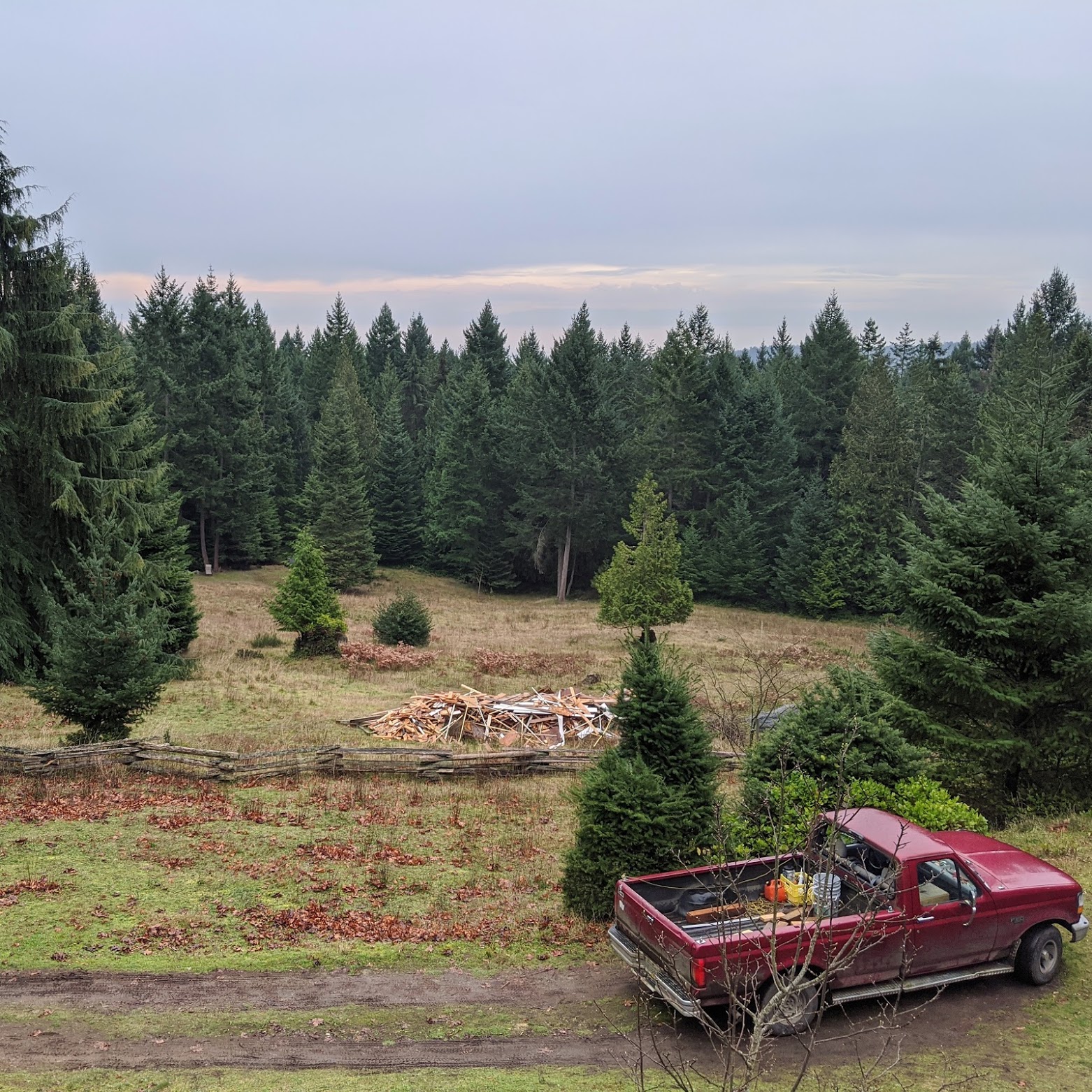Benchmarks for Mass Matrix Adaptation
I was lucky enough to be invited to attend the Gradient Retreat earlier this month. It was an entire week on a beautiful island with some amazingly intelligent Bayesians, and no demands on my time other than the self-set (and admittedly vague) goal of contributing to probabilistic programming in some way.
I initially tried to implement mass matrix adaptation in Tensorflow Probability, but I quickly readjusted my goals to something more achievable: running some benchmarks with tuning in Hamiltonian Monte Carlo (HMC).


A quick rundown for those unfamiliar: tuning is what happens before sampling, during which the goal is not to actually draw samples, but to prepare to draw samples1. For HMC and its variants, this means estimating HMC parameters such as the step size, integration time and mass matrix2, the last of which is basically the covariance matrix of the model parameters. Because my life is finite (and I assume everybody else’s is too), I limited myself to mass matrix adaptation.
(If you’re still uncertain about the details of tuning or mass matrix adaptation, check out Colin Carroll’s essay on HMC tuning or the Stan reference manual on HMC parameters: I don’t explain many more concepts in the rest of this post.)
The interesting thing about tuning is that there are no rules: there are no asymptotic guarantees we can rely on and no mathematical results to which we can turn for enlightened inspiration. The only thing we care about is obtaining a decent estimate of the mass matrix, and preferably quickly.
Accompanying this lack of understanding of mass matrix adaptation is an commensurate lack of (apparent) scientific inquiry — there is scant literature to look to, and for open source developers, there is little prior art to draw from when writing new implementations of HMC!
So I decided to do some empirical legwork and benchmark various methods of mass matrix adaptation. Here are the questions I was interested in answering:
- Is the assumption that the mass matrix is diagonal (in other words, assume that all parameters are uncorrelated) a good assumption to make? What are the implications of this assumption for the tuning time, and the number of effective samples per second?
- Does the tuning schedule (i.e. the sizes of the adaptation windows) make a big difference? Specifically, should we have a schedule of constant adaptation windows, or an “expanding schedule” of exponentially growing adaptation windows?
- Besides assuming the mass matrix is diagonal, are there any other ways of simplifying mass matrix adaptation? For example, could we approximate the mass matrix as low rank?
I benchmarked five different mass matrix adaptation methods:
- A diagonal mass matrix (
diag) - A full (a.k.a. dense) mass matrix (
full) - A diagonal mass matrix adapted on an expanding schedule (
diag_exp) - A full mass matrix adapted on an expanding schedule (
diag_exp) - A low-rank approximation to the mass matrix using Adrian Seyboldt’s
covadaptlibrary.
I benchmarked these adaptation methods against six models:
- A 100-dimensional multivariate normal with a non-diagonal covariance matrix (
mvnormal) - A 100-dimensional multivariate normal with a low-rank covariance matrix (
lrnormal) - A stochastic volatility model (
stoch_vol) - The eight schools model (
eight) - The PyMC3 baseball model (
baseball) - A sparse Gaussian process approximation (
gp)
Without further ado, the main results are shown below. Afterwards, I make some general observations on the benchmarks, and finally I describe various shortcomings of my experimental setup (which, if I were more optimistic, I would call “directions for further work”).
Tuning Times
This tabulates the tuning time, in seconds, of each adaptation method for each model. Lower is better. The lowest tuning time for each model is shown in bold italics.
mvnormal | lrnormal | stoch_vol | gp | eight | baseball | |
|---|---|---|---|---|---|---|
diag | 365.34 | 340.10 | 239.59 | 18.47 | 2.92 | 5.32 |
full | 8.29 | 364.07 | 904.95 | 14.24 | 2.91 | 4.93 |
diag_exp | 358.50 | 360.91 | 219.65 | 16.25 | 3.05 | 5.08 |
full_exp | 8.46 | 142.20 | 686.58 | 14.87 | 3.21 | 6.04 |
covadapt | 386.13 | 89.92 | 398.08 | N/A | N/A | N/A |
Effective Samples per Second
This tabulates the number of effective samples drawn by each adaptation method for each model. Higher is better. The highest numbers of effective samples per second is shown in bold italics.
mvnormal | lrnormal | stoch_vol | gp | eight | baseball | |
|---|---|---|---|---|---|---|
diag | 0.02 | 1.55 | 11.22 | 65.36 | 761.82 | 455.23 |
full | 1.73 | 0.01 | 6.71 | 106.30 | 840.77 | 495.93 |
diag_exp | 0.02 | 1.51 | 9.79 | 59.89 | 640.90 | 336.71 |
full_exp | 1,799.11 | 1,753.65 | 0.16 | 101.99 | 618.28 | 360.14 |
covadapt | 0.02 | 693.87 | 5.71 | N/A | N/A | N/A |
Observations
tldr: As is typical with these sorts of things, no one adaptation method uniformly outperforms the others.
- A full mass matrix can provide significant improvements over a diagonal mass
matrix for both the tuning time and the number of effective samples per
second. This improvement can sometimes go up to two orders of magnitude!
- This is most noticeable in the
mvnormalmodel, with heavily correlated parameters. - Happily, my benchmarks are not the only instance of full mass matrices outperforming diagonal ones: Dan Foreman-Mackey demonstrated something similar in one of his blog posts.
- However, in models with less extreme correlations among parameters, this advantage shrinks significantly (although it doesn’t go away entirely). Full matrices can also take longer to tune. You can see this in the baseball or eight schools model.
- Nevertheless, full mass matrices never seem to perform egregiously worse than diagonal mass matrices. This makes sense theoretically: a full mass matrix can be estimated to be diagonal (at the cost of a quadratic memory requirement as opposed to linear), but not vice versa.
- This is most noticeable in the
- Having an expanding schedule for tuning can sometimes give better performance,
but nowhere near as significant as the difference between diagonal and full
matrices. This difference is most noticeable for the
mvnormalandlrnormalmodels (probably because these models have a constant covariance matrix and so more careful estimates using expanding windows can provide much better sampling). - I suspect the number of effective samples per second for a full mass matrix on
the
lrnormalmodel (0.01 effective samples per second) is a mistake (or some other computational fluke): it looks way too low to be reasonable. - I’m also surprised that
full_expdoes really badly (in terms of effective samples per second) on thestoch_volmodel, despitefulldoing decently well! This is either a fluke, or a really interesting phenomenon to dig in to. covadaptseems to run into some numerical difficulties? While running these benchmarks I ran into an inscrutable and non-reproducibleArpackErrorfrom SciPy.
Experimental Setup
- All samplers were run for 2000 tuning steps and 1000 sampling steps. This is
unusually high, but is necessary for
covadaptto work well, and I wanted to use the same number of iterations across all the benchmarks. - My expanding schedule is as follows: the first adaptation window is 100 iterations, and each subsequent window is 1.005 times the previous window. These numbers give 20 updates within 2000 iterations, while maintaining an exponentially increasing adaptation window size.
- I didn’t run
covadaptfor models with fewer than 100 model parameters. With so few parameters, there’s no need to approximate a mass matrix as low-rank: you can just estimate the full mass matrix! - I set
target_accept(a.k.a.adapt_deltato Stan users) to 0.9 to make all divergences go away. - All of these numbers were collected by sampling once per model per adaptation method (yes only once, sorry) in PyMC3, running on my MacBook Pro.
Shortcomings
- In some sense comparing tuning times is not a fair comparison: it’s possible that some mass matrix estimates converge quicker than others, and so comparing their tuning times is essentially penalizing these methods for converging faster than others.
- It’s also possible that my expanding schedule for the adaptation windows just sucks! There’s no reason why the first window needs to be 100 iterations, or why 1.005 should be a good multiplier. It looks like Stan doubles their adaptation window sizes during warmup.
- These benchmarks are done only for very basic toy models: I should test more extensively on more models that people in The Real World™ use.
- If you are interested in taking these benchmarks further (or perhaps just want to fact-check me on my results), the code is sitting in this GitHub repository3.
It’s good to point out that mass matrix adaptation is to make sampling more efficient, not more valid. Theoretically, any mass matrix would work, but a good one (i.e. a good estimate of the covariance matrix of the model parameters) could sample orders of magnitudes more efficiently. ↩︎
…uh, sweats and looks around nervously for differential geometers more formally called the metric… ↩︎
There are some violin plots lying around in the notebook, a relic from a time when I thought that I would have the patience to run each model and adaptation method multiple times. ↩︎